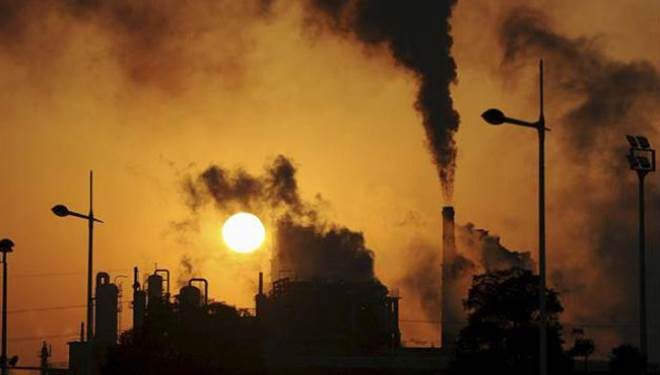Berlin: The levels of the greenhouse gas carbon dioxide (CO2) in the atmosphere are higher today than ever before in the past three million years, according to a study.
For the first time, scientists from the Potsdam Institute for Climate Impact Research in Germany succeeded to do a computer simulation that fits ocean floor sediment data of climate evolution over this period of time.
The study found that ice age onset, and the start of the glacial cycles from cold to warm and back, was mainly triggered by a decrease of CO2-levels.
Today, it is the increase of greenhouse gases due to the burning of fossil fuels that is fundamentally changing our planet, according to the study published in the journal Science Advances.
Global mean temperatures never exceeded the preindustrial levels by more than 2 degrees Celsius in the past three million years, the study shows. The current climate policy inaction, if continued, would exceed the 2 degrees limit already in the next 50 years, researchers said.
“We know from the analysis of sediments on the bottom of our seas about past ocean temperatures and ice volumes, but so far the role of CO2 changes in shaping the glacial cycles has not been fully understood,” said Matteo Willeit of the Potsdam Institute for Climate Impact Research, lead author of the study. “It is a breakthrough that we can now show in computer simulations that changes in CO2 levels were a main driver of the ice ages, together with variations of how the Earth’s orbits around the sun, the so-called Milankovitch cycles,” he said.
“These are actually not just simulations: we compared our results with the hard data from the deep sea, and they prove to be in good agreement,” Willeit said. “Our results imply a strong sensitivity of the Earth system to relatively small variations in atmospheric CO2. As fascinating as this is, it is also worrying,” she said.
Studying Earth’s past and its natural climate variability is key to understanding possible future pathways of humanity. “It seems we’re now pushing our home planet beyond any climatic conditions experienced during the entire current geological period, the Quaternary,” said Willeit.
“A period that started almost 3 million years ago and saw human civilisation beginning only 11,000 years ago. So, the modern climate change we see is big, really big; even by standards of Earth history,” Willeit said. The researchers reproduced the main features of natural climate variability over the last few million years with an efficient numerical model — a computer simulation based on astronomical and geological data and algorithms representing the physics and chemistry of our planet.






































